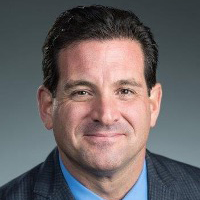The year is drawing to a close, and if you’re approaching retirement, you could be facing a unique window of opportunity. You’re likely closing client books and sending out tax reminders. At the same time, you could be implementing strategies that reduce your own taxes, bolster retirement savings, and set the stage for a smooth exit from your practice.
In this article, we’ll explore four key year-end moves every CPA firm owner nearing retirement should consider: harvesting capital gains, maximizing retirement plan contributions, reviewing succession plans, and preparing yourself and your firm for the transition out of ownership.
Harvest Capital Gains Before Year-End
By now you’re probably well-acquainted with tax-loss harvesting, selling losing investments before year-end to offset gains. But have you considered harvesting capital gains? This lesser-known strategy involves intentionally selling some winning investments before December 31 to capitalize on today’s low capital gains tax rates. If your taxable income is moderate or you have unused capital losses, harvesting gains can be a smart move.
For example, long-term capital gains (assets held over one year) can be taxed at 0% in lower income brackets. For 2025, single filers with taxable income up to about $48,350 (and joint filers up to about $96,700) pay 0% on long-term capital gains¹. That means if your income is expected to fall in or near that range – perhaps because you’re winding down work or have significant deductions – you could sell some appreciated assets and pay no federal tax on the gain. Even if your income is higher, you might still take advantage of the 15% capital gains rate before potentially moving into a higher bracket later. The idea is to “fill up” your lowest tax bracket with gains now, rather than deferring and possibly paying more later.

Capital Gains Harvesting Calculator
Discover if you can harvest gains at 0% tax or offset them with losses before year-end
Your Capital Gains Strategy
• Be aware of mutual fund early redemption fees
• Gains harvesting raises your cost basis, potentially reducing future taxes
• All transactions must be completed by December 31, 2025
Another scenario: if you’ve realized capital losses earlier in the year (or carryovers from prior years), consider selling some winners to absorb those losses. Capital losses can offset capital gains dollar-for-dollar, so unused losses are essentially a free pass to realize gains with no tax cost. Rather than letting a large loss carry forward indefinitely, harvest an equivalent amount of gains before year-end so the loss can shelter those profits. This strategy resets your investment’s cost basis higher (potentially reducing future taxable gains) while utilizing the tax benefit of the losses.
Keep a few cautions in mind. When harvesting gains, there’s no wash-sale rule (that rule only applies to losses), but you should still be thoughtful about how you reinvest. If you plan to buy back the same stock or fund, be aware of any short-term trading fees or mutual fund restrictions on quick repurchases. It’s often wise to reinvest in a similar (but not identical) asset for at least 30 days, just to be safe and to maintain your portfolio balance.
 Year-End Tax Opportunities
Year-End Tax Opportunities - 0% Capital Gains Bracket: If your taxable income is within the ~0% bracket for long-term gains, sell appreciated assets now to pay no tax on the gain.
- Offset Gains with Losses: Use any realized losses to absorb gains – harvest profits up to the amount of your losses so you owe zero tax.
- Reset Cost Basis: Harvesting gains increases your cost basis for future sales, potentially reducing taxes when you fully retire and sell investments later.
- Act by Dec 31: These moves must be done before year-end to count for this tax year – review your portfolio in December and seize the opportunity.
Also, consider the ripple effects of extra income – realizing gains will boost your adjusted gross income, which could impact things like Medicare premiums or the Net Investment Income Tax for high earners. As always, consult with your personal tax advisor to calculate the optimal amount of gain to harvest. The main point is that year-end gives you a chance to lock in gains at a favorable tax rate and optimize your tax picture ahead of retirement.
Maximize Retirement Plan Contributions
Year-end is your last chance to make contributions (or at least commit to them) that will lower your taxable income and potentially boost your savings. This is especially critical if you’re within a couple of years of retirement, since you won’t have many more opportunities to contribute as an active owner.
Start with the basics: ensure you’ve maxed out your 401(k) or similar plan through salary deferrals. For 2025, the 401(k) employee contribution limit is $23,500. If you’re 50 or older, you can make an extra $7,500 catch-up contribution, bringing your total to $31,000. And if you’re 60–63 by year-end, your plan may allow a “super catch-up” of $11,250, raising your limit to $34,750 (IRS 2025). Every dollar you contribute pre-tax reduces your taxable salary, saving you money now while funding your retirement.

401(k) Contribution Maximizer
Calculate how much you need to contribute to max out your 401(k) before year-end
Your Year-End Action Plan
Check your payroll withholding to ensure you’ll hit the limit by your final paycheck, and if not, adjust your year-end bonus or December pay. Employee contributions must generally be made by 12/31. If you’re self-employed or your firm uses a SEP IRA, you usually have until your tax filing deadline to contribute – but plan now to set aside the cash so you can fund the maximum as soon as possible.
Defined-Benefit Plan
Beyond the standard 401(k)/IRA, many CPA firm owners establish a defined-benefit retirement plan as they approach retirement. A Defined Benefit (DB) plan (often structured as a cash balance pension) lets you contribute far more than a 401(k) (often six-figure annual contributions) because it’s designed to fund a target pension benefit at retirement. If you have the cash flow and the appetite for a big tax deduction, a DB plan can be a game changer.
In fact, annual contributions in a defined-benefit plan can reach $100,000, $200,000, or even $300,000+ per year for older, high-earning owners². The exact amount depends on your age, income, and chosen benefit formula, but the point is the contribution limits are dramatically higher than a 401(k).

Defined Benefit Plan Calculator
Discover how much you could contribute annually and the tax savings potential of a DB plan
Your Estimated DB Plan Benefits
📊 Compared to a 401(k)
For example, a 60-year-old CPA owner could potentially contribute on the order of $300k in one year to a DB plan, a massive tax deduction and retirement boost². These plans must be established by year-end if you want to make a contribution for this year, so talk to a retirement plan administrator or actuary now if this is of interest. (Contributions can often be made after year-end, before you file taxes, but the plan has to be in place by December 31.)
Review Your Buy-Sell Agreement & Succession Plan
Buy-Sell Agreement
When was the last time you updated your buy-sell agreement or succession plan? If you’re like many firm owners, it might have been when the partnership was formed or the last partner joined, which could be years or decades ago. As retirement nears, it’s vital to review these agreements before year-end to ensure they still align with your goals and your firm’s current reality.
For multi-partner firms, the buy-sell agreement is essentially the “prenup” that governs how a partner’s exit is handled. Over time, businesses evolve: the firm’s value changes, partner roles shift, and new circumstances (like a pending retirement) emerge. Your agreement should reflect those changes. Key areas to examine include:
- Valuation Formula: Does the agreement specify a method to value the practice or the departing partner’s share? Is it a fixed amount, a multiple of revenue, or book value? Make sure it’s up to date. For instance, if your firm’s earnings have grown significantly, a stale valuation formula might undervalue the business. You may need to amend it to a more current valuation approach so you receive fair compensation for your equity. Conversely, if market conditions for CPA firms have changed (say, average sale multiples in the industry have shifted), update the terms accordingly. A little time spent now to fine-tune the valuation clause can prevent major disagreements later.
- Buyout Terms: Review how a buyout would be funded and paid. Will the firm or remaining partners pay you in a lump sum, or via installments over a few years? Is there life or disability insurance involved (more relevant if an unexpected exit)? If you plan to retire at year-end or next year, you and your partners might negotiate specific payout terms that the agreement should formalize. For example, you might agree to a 5-year payout of your capital account and goodwill, to ease the financial strain on the firm. If the document currently lacks clarity on retirement withdrawals, now’s the time to add those details. Everyone will feel more comfortable when the plan for your exit is spelled out in writing.
- Succession Triggers and Process: Ensure the agreement covers voluntary retirement as a trigger event (not just death or disability). It should outline the notice you need to give, how clients will be notified or transitioned, and any non-compete or consulting arrangements. Perhaps you intend to stay on as a consultant for one tax season after selling your share – if so, put that understanding into the agreement or a separate transition plan. Clear expectations now will prevent misunderstandings during the handover.
Succession Plan
If you’re a solo practitioner or sole owner, you won’t have a buy-sell agreement with partners, but you still need a succession plan. This could mean grooming a key employee or junior CPA to take over, or planning to sell the practice to an outside buyer. In either case, use year-end as a checkpoint to firm up those plans. For example, if you aim to sell the practice in the next year or two, start preparing your financials and client metrics now so that the practice is ready to show to potential buyers (cleaning up receivables, documenting workflows, etc.).
Or, if you have an informal understanding with a staff member that they’ll buy you out, it might be time to get that in writing and perhaps involve an attorney to draft terms. Don’t leave succession to chance. Statistics show that a majority of business owners have no formal transition plan in place³, but those who do invariably get better outcomes.
It’s also worth considering the “people” side of succession during this review. If you have partners, have an open conversation with them about your retirement timeline. Year-end planning meetings are a natural time to discuss upcoming changes. Update your clients, too, if appropriate – key clients should know if you’ve identified who will serve them after you step back. Many CPA firms use a gradual introduction approach, where for the year or so before the owner retires, a successor attends meetings and gradually takes over the relationship. That kind of plan should be part of your succession strategy and written down, even if just in an internal memo.
Prepare Mentally and Operationally for Transition
Finally, let’s address an aspect of retirement planning that’s just as important as the financials: getting yourself and your firm ready for the transition out of firm ownership. Stepping away from a CPA practice you’ve built and led for years isn’t easy. It can be emotionally daunting, because, lets face it, your work has likely been a huge part of your identity and daily routine for perhaps decades. Likewise, your firm will go through changes as you depart. The end of the year is a perfect time to start preparing on both fronts: the mental shift for you (the owner) and the operational shift for your business.
Retirement is a major life transition, and it’s normal to feel a mix of excitement and anxiety. Many high-achieving professionals underestimate the psychological impact of leaving full-time work. In fact, financial planners report that while most clients are financially ready to retire, far fewer are emotionally ready⁴. You may have your numbers in order, but have you thought about how you’ll fill your days, find purpose, and stay connected once you’re no longer “Managing Partner” or the go-to CPA for your clients?
It’s simply critical to define your next chapter. Take some time as the year winds down to envision your post-retirement life. Will you do part-time consulting during tax season? Teach or mentor young accountants? Volunteer, travel, pursue hobbies, or spend more time with family? There’s no right answer except having something meaningful to look forward to.
It can also help to talk with other CPA firm owners who have retired or sold their practices. Ask them what surprises they encountered and what they wish they had prepared for emotionally. Some owners struggle with handing off client relationships or worry about the firm’s performance without them. Give yourself permission to feel a bit nostalgic or uncertain, but also remind yourself of why you’re doing this (to enjoy a well-earned retirement, more free time, health, etc.).
Operational Preparation
On the firm side, year-end is a great checkpoint to ensure your business can thrive without you. This overlaps with succession planning, but focuses on practical steps in the short term:
Client Transition Plan
Make a list of your top clients and note who in the firm will handle them going forward. If you haven’t already, start introducing that person to the client. You might arrange joint meetings this December or during early tax season, framing it as “team collaboration,” while subtly signaling that you trust this colleague. This builds client confidence that they’ll be in good hands. By the time you retire, clients should already be comfortable dealing with someone else day-to-day.
Process and Knowledge Transfer
Are a lot of critical processes or information “in your head”? If so, start documenting and delegating. For example, if you’re the only one who knows how to run a particular software or you hold key contacts (like the banker, IT support, etc.), share that knowledge. Year-end is a slower period for some firms (after audits, before busy season), so use the downtime to create SOPs (Standard Operating Procedures) or train your team on tasks you normally handle. This might include everything from how to review a complex client’s return, to how to manage firm billing and collections. The more you systematize and delegate now, the smoother the firm’s operations will run when you’re not there daily.
Hiring or Outsourcing Needs
Consider if your departure will leave any staffing gaps. For instance, if you currently handle all high-level tax planning, have you groomed a senior manager to step up, or should you hire a new CPA with that expertise? It’s easier to address this before you exit. You might bring in a new hire in Q4 so you can train them alongside you for a few months. Alternatively, line up external resources (maybe an outsourced CFO service or tax specialist) to support the team after you retire. This proactive approach prevents your colleagues from feeling overwhelmed or your clients from experiencing a drop in service quality.
Housekeeping Items
Treat the transition like a project. Tie up loose ends by year-end: update any online accounts or software licenses that were in your name, organize client files, and ensure critical documents (like lease agreements, insurance policies, etc.) are accessible to the remaining owners. If you’re selling the firm, you’ll want these items organized for the buyer’s due diligence as well. Operational readiness often boils down to making the business less dependent on you. If the business can run smoothly on January 2nd without you there, you’ve done an excellent job preparing it.
 Succession & Transition Checklist
Succession & Transition Checklist - Buy-Sell Agreement Updated: Ensure valuation, payout terms, and retirement provisions are current and fair to all parties.
- Successor Identified: Designate who will take over key clients and roles; involve them in client meetings now for a smooth hand-off.
- Document & Delegate: Write down critical processes and train your team to handle tasks you normally oversee. Reduce owner-specific dependencies.
- Post-Retirement Plan: Have a personal plan for how you’ll spend your time and stay fulfilled after stepping away from the firm.
- Timeline Communicated: Establish a clear timeline for your transition and communicate it to partners, staff, and family so everyone is on the same page.
Conclusion
Year-end is always a busy period for CPAs, but don’t overlook your own needs in the rush of Q4. Taking these proactive steps – from tax-savvy investment moves to solidifying your succession plan – can pay dividends for years to come. Harvesting capital gains at the 0% rate or to utilize losses can save you taxes immediately and position your portfolio for retirement. Maxing out retirement contributions, especially via defined-benefit or other advanced plans, lets you sock away substantial funds with a nice tax break. Updating your buy-sell agreement or succession plan ensures that all the equity and goodwill you’ve built in your firm will smoothly (and fairly) convert into retirement value for you, while protecting the business continuity. And perhaps most importantly, preparing yourself mentally and your firm operationally will set the stage for a successful transition – one where you can step away with confidence, knowing your clients and colleagues are in good shape and you’re personally ready for what’s next.
Appendix (External References)
- Internal Revenue Service – Long-Term Capital Gains 0% Tax Bracket Thresholds (2024–2025) irs.gov. (For 2024, single filers with taxable income up to $47,025 – or up to $94,050 for joint filers – qualify for a 0% capital gains tax rate. These thresholds rise to $48,350 and $96,700 respectively in 2025, per IRS inflation adjustments.)
- Emparion (Retirement Plan Specialists) – Defined Benefit Plan Contribution Limits for High Earners emparion.com. (Annual contributions under a defined-benefit pension plan can be well into six figures – often $100,000 to $300,000+ per year, depending on age and income – far above the limits of 401(k) plans.)
- Wilmington Trust Survey – Business Owners Lacking Succession Plans news.wilmingtontrust.com. (A study found that 58% of owners of privately-held businesses had no formal transition or succession plan in place, highlighting how common it is to delay this critical planning.)
- Financial Planning Association – Emotional Preparedness for Retirement financialplanningassociation.org. (Retirement is not just a financial event but a major emotional transition. One survey of financial planners revealed that while over half of clients were considered financially ready for retirement, only 11% were deemed emotionally prepared – underscoring the importance of planning for the lifestyle and psychological changes in retirement.)









